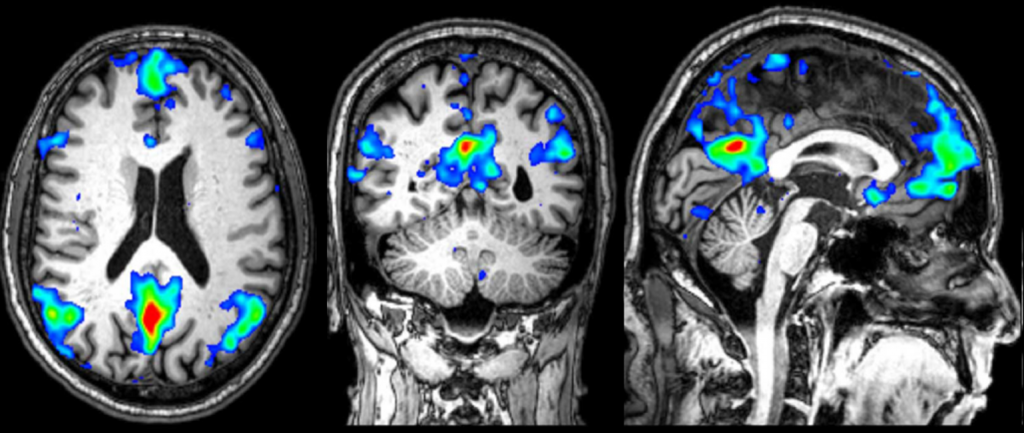
The primary research goal in Dr. Pasinetti’s lab is to investigate the biological processes which occur when, during aging, subjects with normal cognitive function convert into the very earliest stages of Alzheimer’s disease (AD) and then to frank dementia. In pioneering research in Dr. Pasinetti’s lab, Dr. Pasinetti determined that proapoptotic mechanisms may be at play early in the onset of AD, even before overt signs of apoptosis and symptoms. The study indicated that they could be a conditional factor for later neurodegenerative conditions and cognitive impairment. This study is one of several investigations from Dr. Pasinetti’s lab contributing to the now accepted concept that onset of dementia may be the end result of degenerative conditions that initiated 20-30 years prior to symptoms.
In the last few years, the laboratory has been involved in the identification of novel compounds with preclinical efficacy in reducing Aβ-mediated neuropathology and cognitive dysfunction. Knowledge gained from these investigations will provide the basis for designing full-scale project exploring bioavailability, pharmacokinetics and toxicological characteristics of these lead anti-Aβ oligomerization compounds in animal models and in humans, eventually leading to the development of novel lead compounds for IND-directed preclinical safety assessments and Phase I clinical trials for Alzheimer’s disease therapy.
In a recent study, the lab used molecular topology (MT) bioinformatics to identify multiple bioactive properties that allow for the identification of multi-functional single agent compounds, in this case, the dual functions of β-amyloid (Aβ) -lowering and anti-oligomerization. Using this technology, we identified and designed novel compounds in chemical classes unrelated to current anti-AD agents that exert dual Aβ lowering and anti-Aβ oligomerization activities in animal models of AD. Our study, for the first time, demonstrated that MT can provide a novel strategy for discovering drugs with Aβ lowering and anti-aggregation dual activities for AD.More recently, our in vivo studies using a mouse model of AD revealed that exogenous adenoviral Fbx2 expression in the brain significantly decreased BACE1 protein levels and activity, coincidentally reducing Aβ levels and rescuing synaptic deficits. Our study is the first to suggest that promoting Fbx2 in the brain may represent a novel strategy for the treatment of AD.
In recent studies on Parkinson’s disease in Dr. Pasinetti’s lab, we tested new drugs with the final goal of preserving and enhancing survival of substantia nigra dopaminergic neurons. Preserving and enhancing DA neuron survival is increasingly regarded as the most promising therapeutic strategy for treating PD. IRX4204 is a second generation retinoid X receptor (RXR) agonist that has no cross reactivity with retinoic acid receptors, farnesoid X receptor, liver X receptors or peroxisome proliferator-activated receptor PPARγ. We found that IRX4204 promotes the survival and maintenance of nigral dopaminergic (DA) neurons in a dose-dependent manner in primary mesencephalic cultures. Brain bioavailability studies demonstrate that IRX4204 can cross the blood brain barrier and reach the brain at nM concentration. Oral administration of IRX4204 can activate nuclear receptor Nurr1 downstream signaling in the substantia nigra (SN) and attenuate neurochemical and motor deficits in a rat model of PD. Our study suggests that IRX4204 represents a novel, potent and selective pharmacological means to activate cellular RXR-Nurr1 signaling and promote SN DA neuron survival in PD prevention and/or treatment.
The Pasinetti lab has conducted genome wide association studies (GWAS) to explore the genetic markers in type 2 diabetic (T2D) subjects that might predispose them to onset of AD. Collectively, these GWAS studies tentatively support the epidemiological observation of disease concordance between T2D and AD. Moreover, the studies provide the much needed information for the design of future novel therapeutic approaches, for a subpopulation of T2D subjects with genetic predisposition to AD, that could benefit T2D and reduce the risk for subsequent development of AD. This genomic study is in part consistent with recent evidence in our laboratory demonstrating that pharmacological inhibition of histone deacetylace IIa restored synaptic plasticity. This study demonstrated that T2D may induce epigenetic modifications affecting neuropathological mechanisms in the brain leading to increased susceptibility to insults associated with neurodegenerative or vascular impairments. Collectively, this study provides, for the first time, genetic and epigenetic explanations for the increased risk of dementia in T2D subjects.
